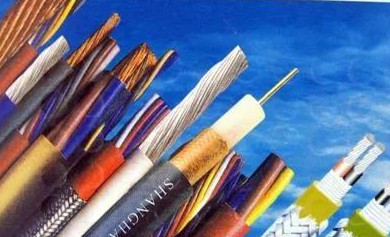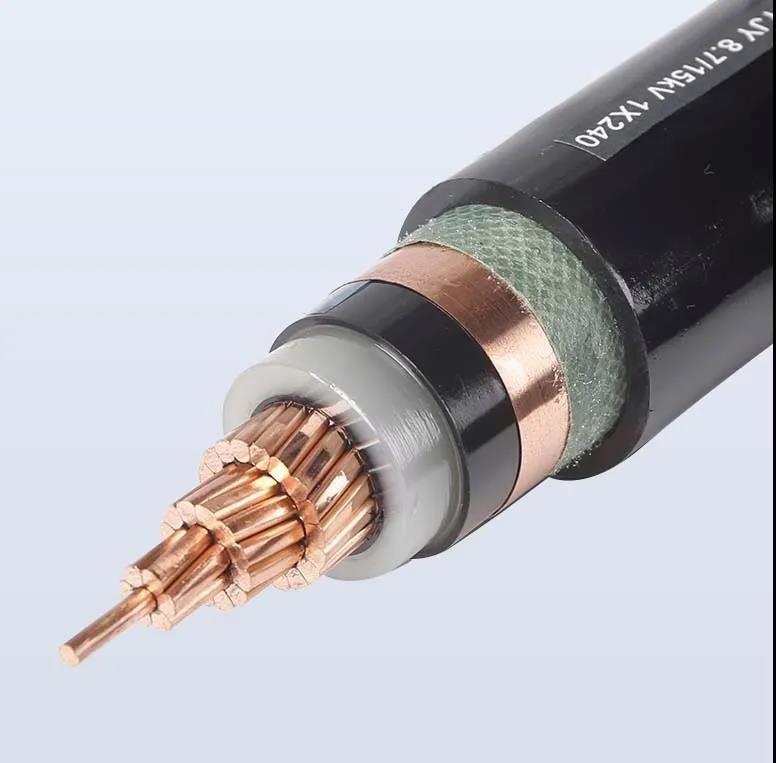1、 Basic introduction of wire and cable
Wire and cable: usually twisted by several wires or groups of wires [at least two in each group], similar to rope. Each group of wires is insulated from each other and twisted around the center of a wire. The whole wire is covered with a highly insulating covering layer. It is mainly used for transmission, distribution of electric energy or transmission of electric signals.
Wires and ACSR Cables are mainly composed of the following four parts
1. Conductive core: made of high conductivity material (copper or aluminum). According to the requirements of laying and using conditions for cable flexibility, each wire core may be made of a single wire or multiple wires.
2. Insulating layer: the insulating material used for cables shall have high insulation resistance. The common insulation materials used in cables are oil impregnated paper, PVC, PE, XLPE, rubber, etc.

3. Sealed sheath: protect insulated wire core from mechanical, moisture, moisture, chemicals, light and other damage. For the insulation susceptible to moisture, lead or aluminum extrusion sealing sheath is generally used.
4. Protective coating: used to protect the sealing sheath from mechanical damage. Generally, galvanized steel strip, steel wire or copper strip, copper wire, etc. are used as armor to wrap around the sheath (called armored cable), and the armor layer plays the role of electric field shielding and preventing external electromagnetic interference at the same time. In order to avoid the corrosion of steel strip and steel wire by the surrounding medium, they are usually coated with asphalt or wrapped with impregnated jute layer or extruded with polyethylene or PVC sleeve.
2、 Wire and cable specifications
Wire and cable specification is the meaning of the expression of the number of cores and section size of wire and cable. The complete naming of wires and AAC Cables is usually more complex, so people sometimes use a simple name (usually the name of a category) combined with model specifications to replace the complete name. For example, “low voltage cable” represents all plastic insulated power cables of 0.6/1kv class. It can be said that as long as the standard models and specifications of wires and cables are written, specific products can be identified.
3、 Wire and cable application classification
(1) Classified by insulating materials, such as oil impregnated paper insulated cable, PVC cable, XLPE cable, etc.
(2) According to the use classification, it is divided into power cable, communication cable and control cable. They are used in power system, information transmission system, mechanical equipment and instrument system.
1. Power system
The wire and cable products used in power system mainly include overhead bare wire, bus bar (bus bar), power cable (plastic cable, oil paper power cable (basically replaced by plastic power cable), rubber sheathed cable, overhead insulated cable), branch cable (replacing part of bus bar), electromagnetic wire and electric equipment wire and cable for power equipment.

2. Information transmission system
The wires and cables used in information transmission system mainly include local telephone cable, television cable, electronic cable, radio frequency cable, optical fiber cable, data cable, electromagnetic wire, power communication or other composite cables.
3. Mechanical equipment and instrument system
Except for overhead bare wires, almost all other products have applications, but mainly power cables, electromagnetic wires, data cables, instrument cables, etc.
(3) According to product classification, it can be divided into five categories
1. Bare wire and bare conductor products
The main features of this kind of products are: pure conductor metal, no insulation and sheath layer, such as ACSR, Cu al bus bar, electric locomotive line, etc; The processing technology is mainly pressure processing, such as melting, calendering, drawing, stranding / tight stranding, etc; Products are mainly used in suburbs, rural areas, user main line, switch cabinet, etc.
2. Power cable
The main features of this kind of products are: extruding (winding) the insulating layer outside the conductor, such as overhead insulated cable, or twisting several cores (corresponding to the phase line, zero line and ground wire of power system), such as overhead insulated cable with more than two cores, or adding sheath layer, such as plastic / rubber sheathed wire and cable. The main process technologies include drawing, stranding, insulation extrusion (wrapping), cabling, armor, sheath extrusion, etc. different process combinations of various products have certain differences.
The products are mainly used in the transmission of strong electric energy in power generation, distribution, transmission, transformation and power supply lines, with large current (tens to thousands of a) and high voltage (220 V to 500 kV and above).
3. Wires and cables for electrical equipment
The main features of these products are: a wide range of varieties and specifications, a wide range of applications, the use of voltage in 1kV and below more, in the face of special occasions continue to derive new products, such as fire-resistant cable, flame retardant cable, low smoke halogen-free / low smoke halogen-free cable, termite proof, mouse proof cable, oil / cold / temperature / wear-resistant cable, medical / agricultural / mining cable, thin-walled wire, etc.
4. Communication cable and optical fiber
From simple telephone and telegraph cables in the past to thousands of pairs of telephone cables, coaxial cables, optical cables, data cables, and even combined communication cables. This kind of product structure size is usually small and uniform, high manufacturing accuracy requirements.
5. Electromagnetic wire (winding wire)
It is mainly used for various motors, instruments, etc.
4、 What’s the difference between wire and cable?
In fact, there is no strict boundary between “wire” and “cable”. Generally, the products with few cores, small diameter and simple structure are called wires, the ones without insulation are called bare wires, and the others are called cables; The conductor with larger cross-sectional area (more than 6 square mm) is called large wire, the smaller one (less than or equal to 6 square mm) is called small wire, and the insulated wire is also called cloth wire. But with the expansion of the scope of use, many varieties of “cable in the cable”, “cable in the cable”. So there is no need to make a strict distinction. In daily habits, people call household cloth wires wires and power cables for short.
The wire is composed of one or several soft wires with light and soft protective layer; The cable is composed of one or several insulated wires, which are wrapped with a tough outer layer made of metal or rubber. Cables and wires are generally composed of core wire, insulation sheath and protective sheath.
